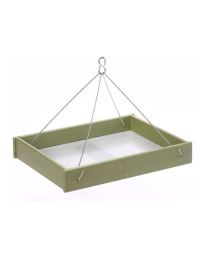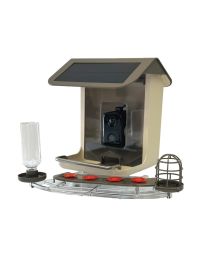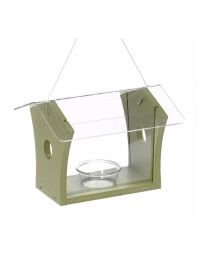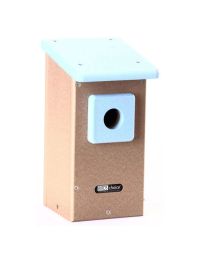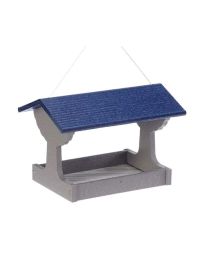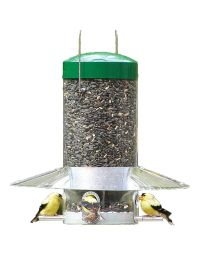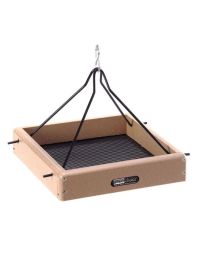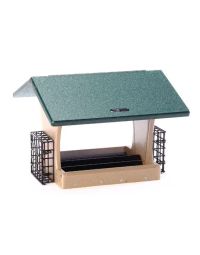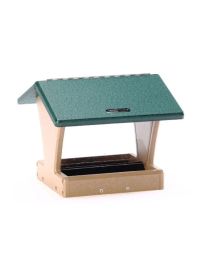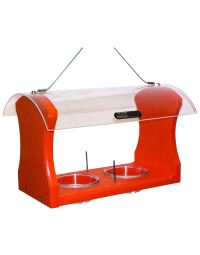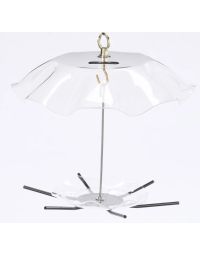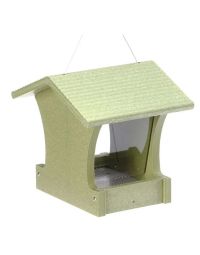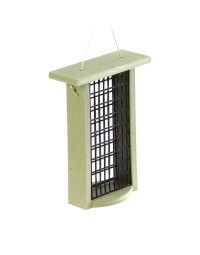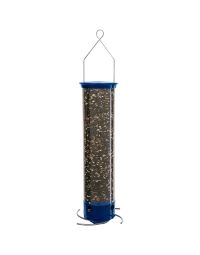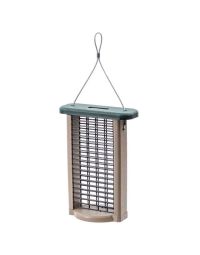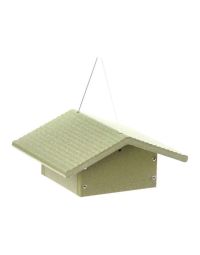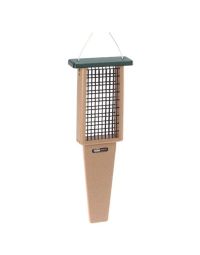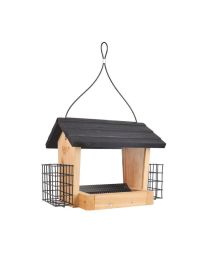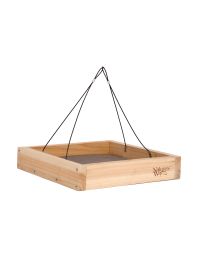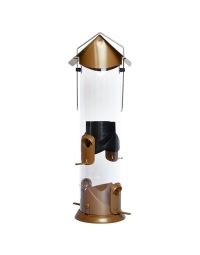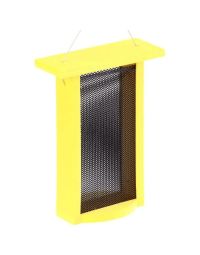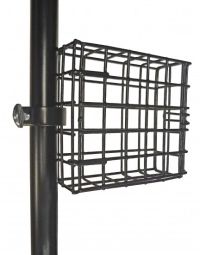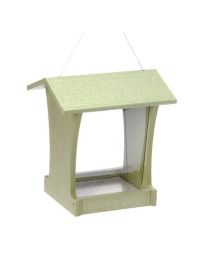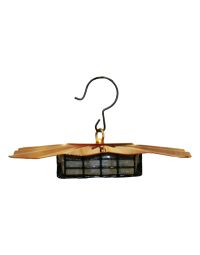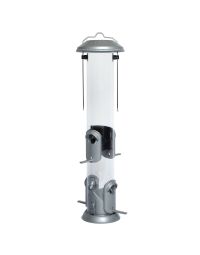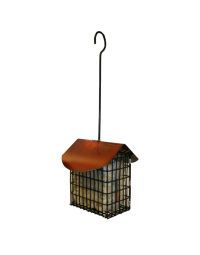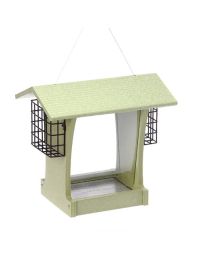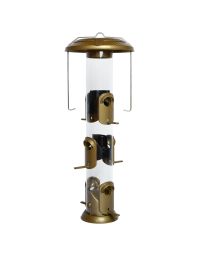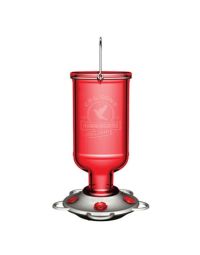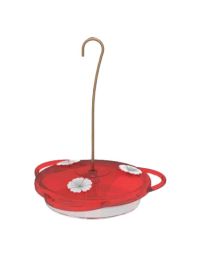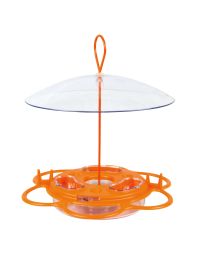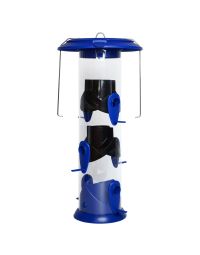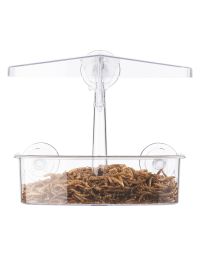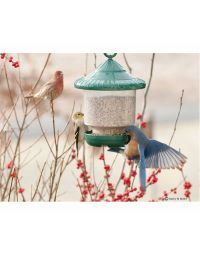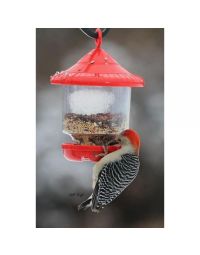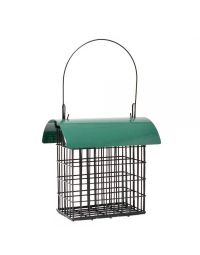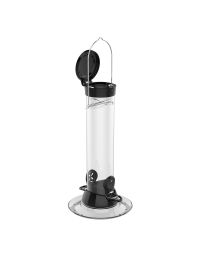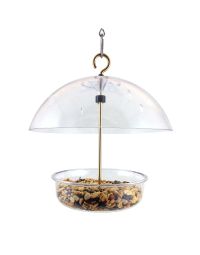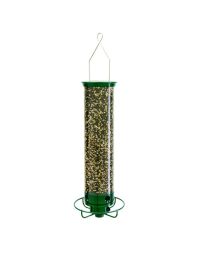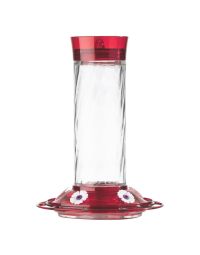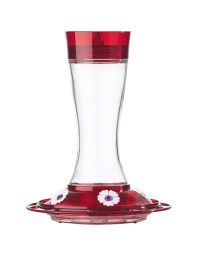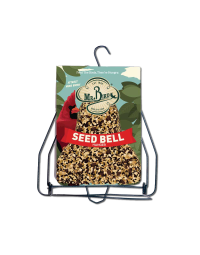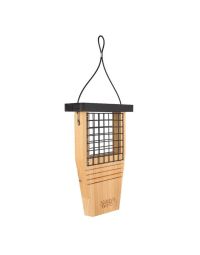There are basically three types: hopper, tube, and platform. Each of these styles appeals to specific birds. Some are easier to use and maintain than others while some incorporate special design features that deter squirrels; all will work.
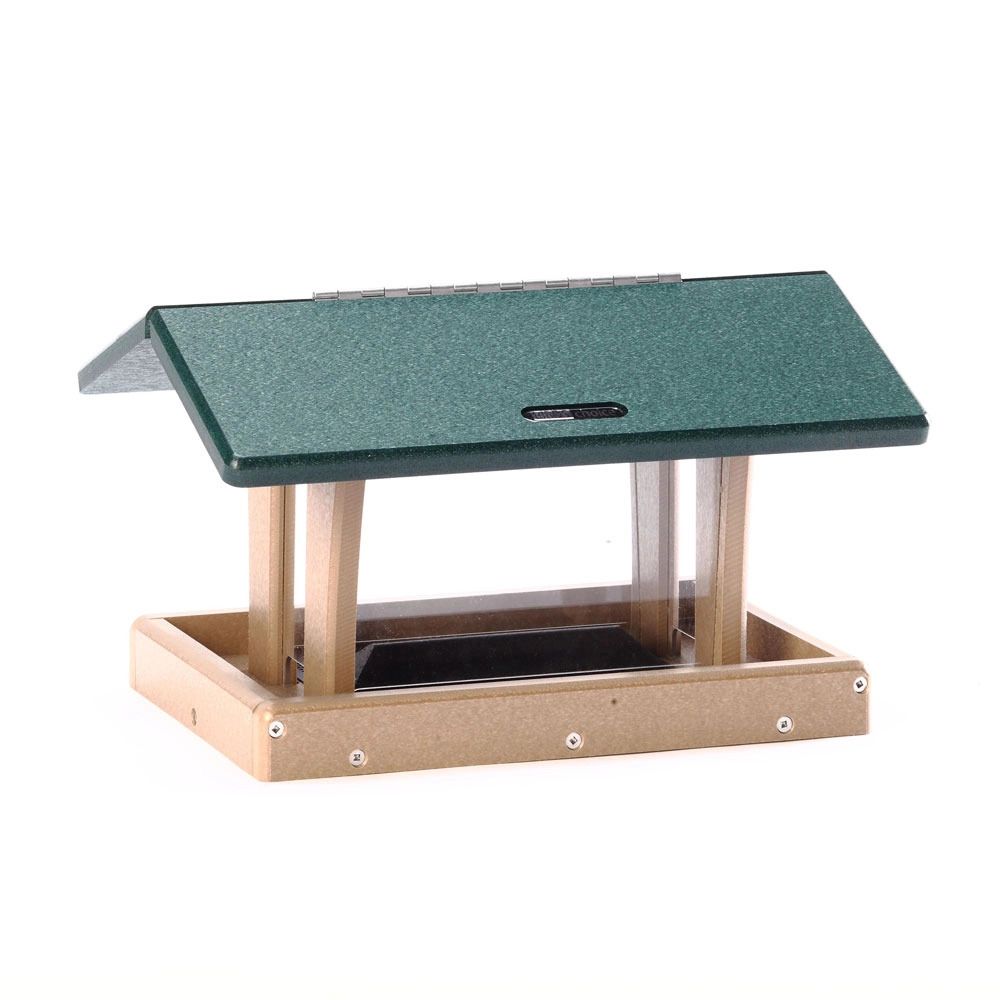
This Hopper Feeder is being visited by two birds - Hoppers are easy to land on.
Hopper Feeders
- These come in a variety of styles and are generally shaped like a house, barn, gazebo or covered bridge.
- They hold a lot of seed which cuts down on the number of times you need to fill them.
- Hoppers are easy to fill as the top usually comes off allowing access to the entire seed holding area.
- Plexiglass sides make it simple to monitor when the feeder needs refilling.
- This feeder can be used by all birds, large or small but it's preferred by doves, blue jays, cardinals, grosbeaks and woodpeckers.
- They can be mounted on a pole or hung from a tree or shepherd hook.
- Hopper feeders are made in a variety of materials. If you purchase a wood feeder it should be made of cedar or some other weather resistant-type of wood or stained or painted on the outside to resist rot. Don’t paint inside the feeder.
- The overhang/roof should completely cover the feeding platform to keep moisture off the seed.
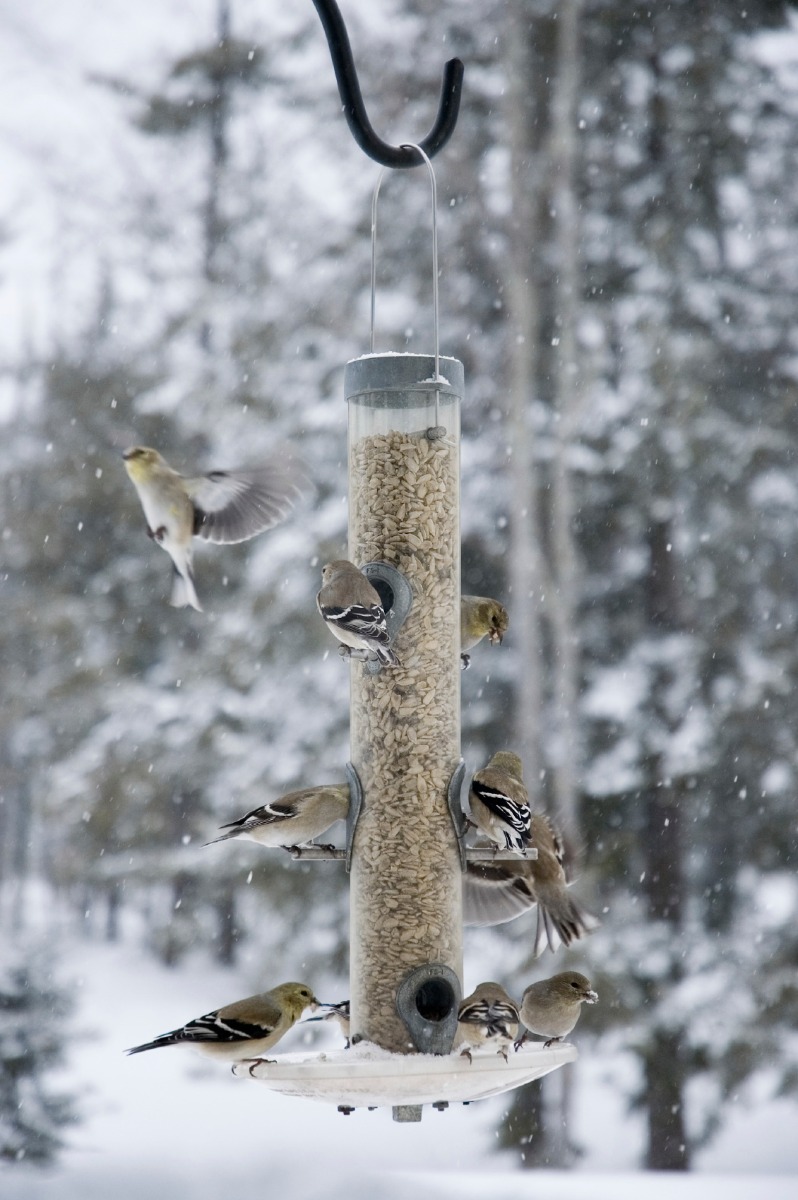
Tube Feeders have smaller areas and holes, making this a prime choice for smaller birds and a bad choice for squirrels!
Tube Feeders
- Tube feeders are tubes or cylinders that have perches aligned with the feeding holes along the tube.
- Some have trays at the bottom of the tube and others a roof or protective cap on top.
- Droll Yankee feeders are the most likely to discourage squirrels. There are several models.
- Tube feeders hold large or small seeds and some accommodate upside down feeding. Chickadees, titmice, nuthatches and finches prefer tube feeders.
- The feeding ports should be reinforced with metal collars to protect them from chewing by squirrels.
- While easy to monitor for filling, they do require more frequent filling. As the food is eaten, the number of available feeding stations decreases.
- Avoid styles that have a “dead space” at the bottom of the tube. Seed just sits there and molds, which is unhealthy for the birds.
- There are funnels specifically designed to help with this.
- Choose one you can take apart for easy cleaning.
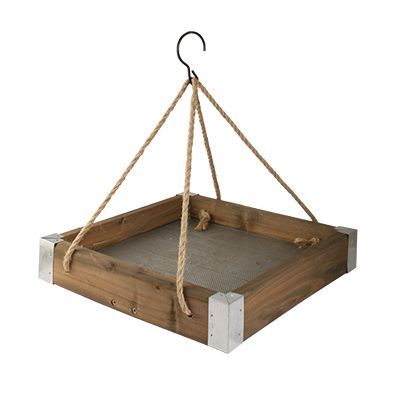
Platform feeders attract all wildlife who enjoy birdseed
Platform Feeders
- Platform feeders are designed to hang or place on the ground, some have a roof.
- Similar to hopper feeders but without the sides.
- All types of birds will come to this feeder.
- Placing your feeder on the ground will also provide a food source for a variety of other animals. Many birds, particularly Doves and Cardinals will ground feed.
- Ground feeders attract squirrels, chipmunks, rabbits and other animals, which may not be your intention! Hot sauce on the seeds is a deterrent for them. The birds aren’t bothered by it.
- To deter predators, place ground feeders at least 10 feet away from shrubs and other predator hiding places. If you’re ambitious and have the room, place wire fencing at least 30 inches high and in an 8 foot or greater diameter from the feeder to deter predators.
- Platform feeders, especially those without roofs, need to have drainage holes to allow for water runoff.
- If a storm is anticipated, bring the feeder inside or cover it.
- Be sure to clean out old, wet seed and replenish with new. Wet seed molds and rots easily. This is very unhealthy for birds to eat, however, they’ll eat it if there are few other food sources available.
The experts at Gertens are always available to answer your questions!
Whether you're a seasoned bird enthusiast or just beginning your journey into the world of avian visitors, selecting the right feeder can make all the difference in attracting the species you love! With so many options available, from traditional seed feeders to specialized suet and thistle feeders, navigating your choices can be an exciting decision. Below are some key factors to consider when choosing a bird feeder, helping you make an informed decision that suits both your feathered friends' needs & your own preferences.
Hopper Feeders
- These come in a variety of styles and are generally shaped like a house, barn, gazebo or covered bridge.
- They hold a lot of seed which cuts down on the number of times you need to fill them. Hoppers are easy to fill as the top usually comes off allowing access to the entire seed holding area.
- Plexiglass sides make it simple to monitor when the feeder needs refilling.
- This feeder can be used by all birds, large or small but it's preferred by doves, blue jays, cardinals, grosbeaks and woodpeckers.
- They can be mounted on a pole or hung from a tree or shepherd hook.
- Hopper feeders are made in a variety of materials. If you purchase a wood feeder it should be made of cedar or some other weather resistant-type of wood or stained or painted on the outside to resist rot. Don’t paint inside the feeder.
- The overhang/roof should completely cover the feeding platform to keep moisture off the seed.
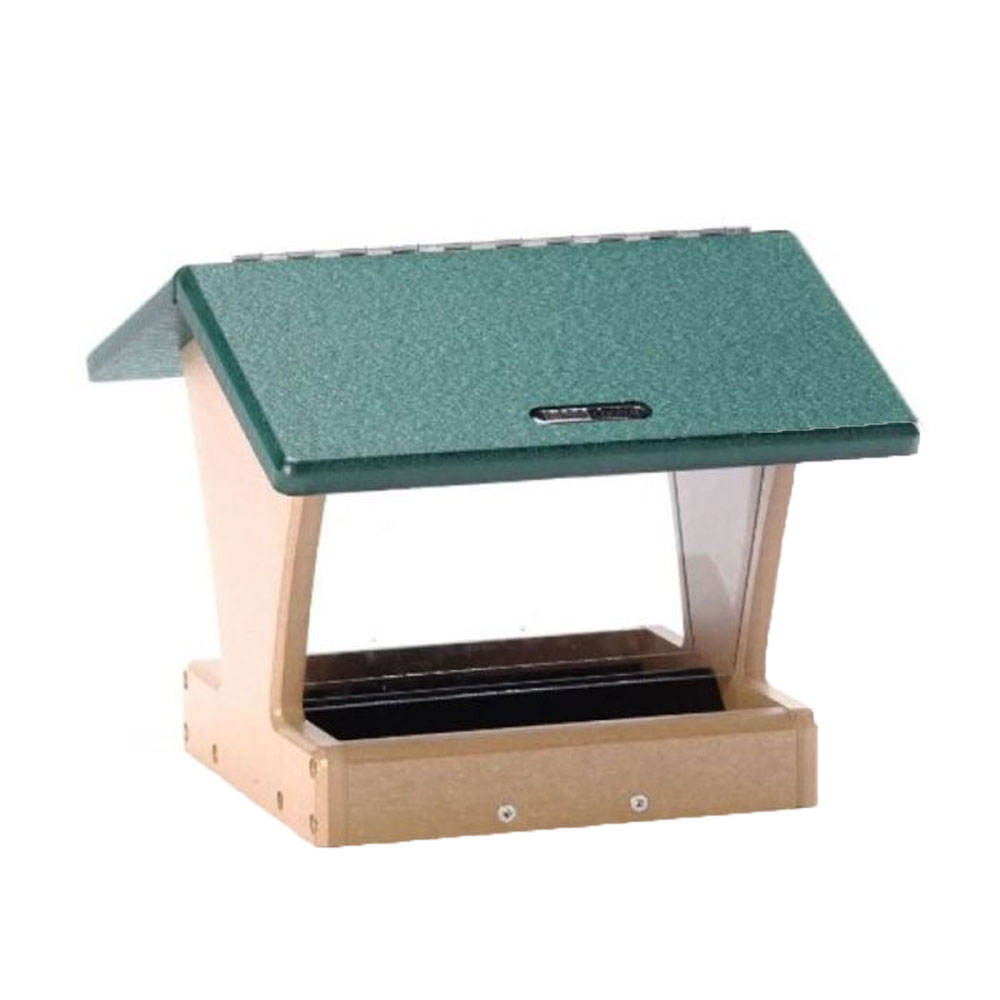

Tube Feeders
- Tube feeders are tubes or cylinders that have perches aligned with the feeding holes along the tube.
- Some have trays at the bottom of the tube and others a roof or protective cap on top.
- Droll Yankee feeders are the most likely to discourage squirrels. There are several models.
- Tube feeders hold large or small seeds and some accommodate upside down feeding. Chickadees, titmice, nuthatches and finches prefer tube feeders.
- The feeding ports should be reinforced with metal collars to protect them from chewing by squirrels.
- While easy to monitor for filling, they do require more frequent filling. As the food is eaten, the number of available feeding stations decreases.
- Avoid styles that have a “dead space” at the bottom of the tube. Seed just sits there and molds, which is unhealthy for the birds.
- There are funnels specifically designed to help with this.
- Choose one you can take apart for easy cleaning.
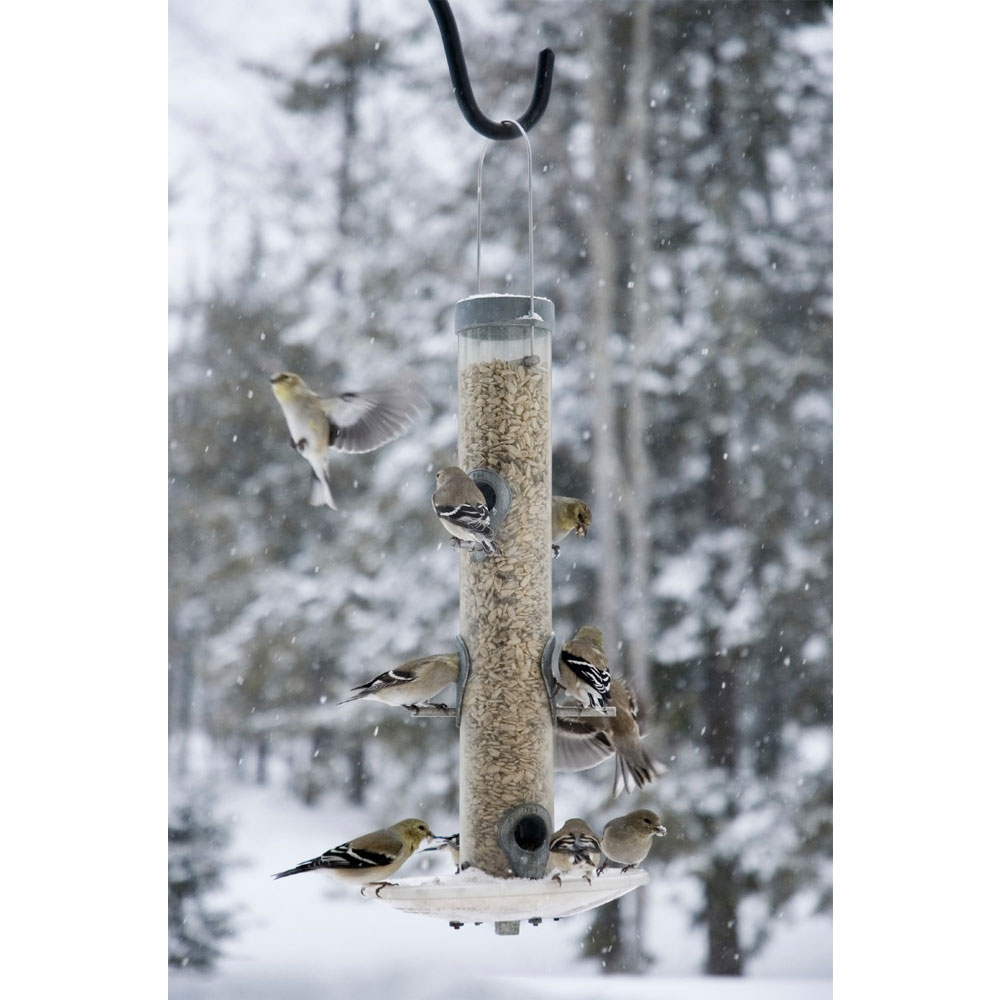

Platform Feeders
- Platform feeders are designed to hang or place on the ground, some have a roof.
- Similar to hopper feeders but without the sides.
- All types of birds will come to this feeder.
- Placing your feeder on the ground will also provide a food source for a variety of other animals. Many birds, particularly Doves and Cardinals will ground feed.
- Ground feeders attract squirrels, chipmunks, rabbits and other animals, which may not be your intention! Hot sauce on the seeds is a deterrent for them. The birds aren’t bothered by it.
- To deter predators, place ground feeders at least 10 feet away from shrubs and other predator hiding places. If you’re ambitious and have the room, place wire fencing at least 30 inches high and in an 8 foot or greater diameter from the feeder to deter predators.
- Platform feeders, especially those without roofs, need to have drainage holes to allow for water runoff.
- If a storm is anticipated, bring the feeder inside or cover it.
- Be sure to clean out old, wet seed and replenish with new. Wet seed molds and rots easily. This is very unhealthy for birds to eat, however, they’ll eat it if there are few other food sources available.
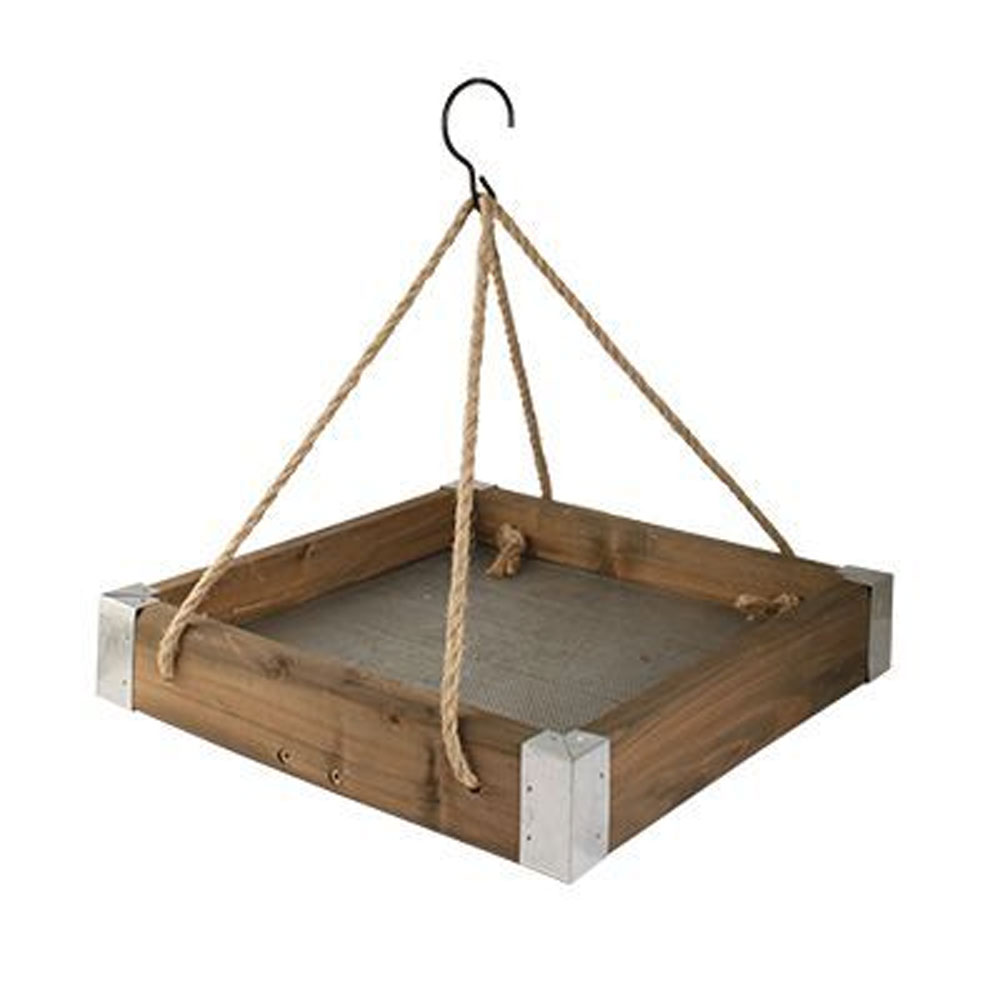

Smart Bird Feeders
- You can keep track of bird activity from anywhere using your smartphone or computer, providing peace of mind & convenience.
- Smart bird feeders often come with sensors that collect data on bird visits, helping you understand bird behavior and preferences.
- By providing a consistent food source, smart bird feeders can contribute to local bird conservation efforts, especially during harsh weather conditions or habitat loss.
- Some smart feeders come with features like bird identification, allowing you to learn more about the birds frequenting your feeder and contributing to citizen science initiatives.
- Smart feeders may incorporate features to deter predators, such as automatic closing mechanisms or alarms triggered by large animals.
- Smart feeders provide an excellent educational opportunity for children and adults alike to learn about birds, their behaviors, and the importance of wildlife conservation.
- Sharing data collected from your smart feeder with local birdwatching communities or online forums fosters engagement and collaboration among bird enthusiasts, contributing to collective knowledge about bird populations & behaviors.
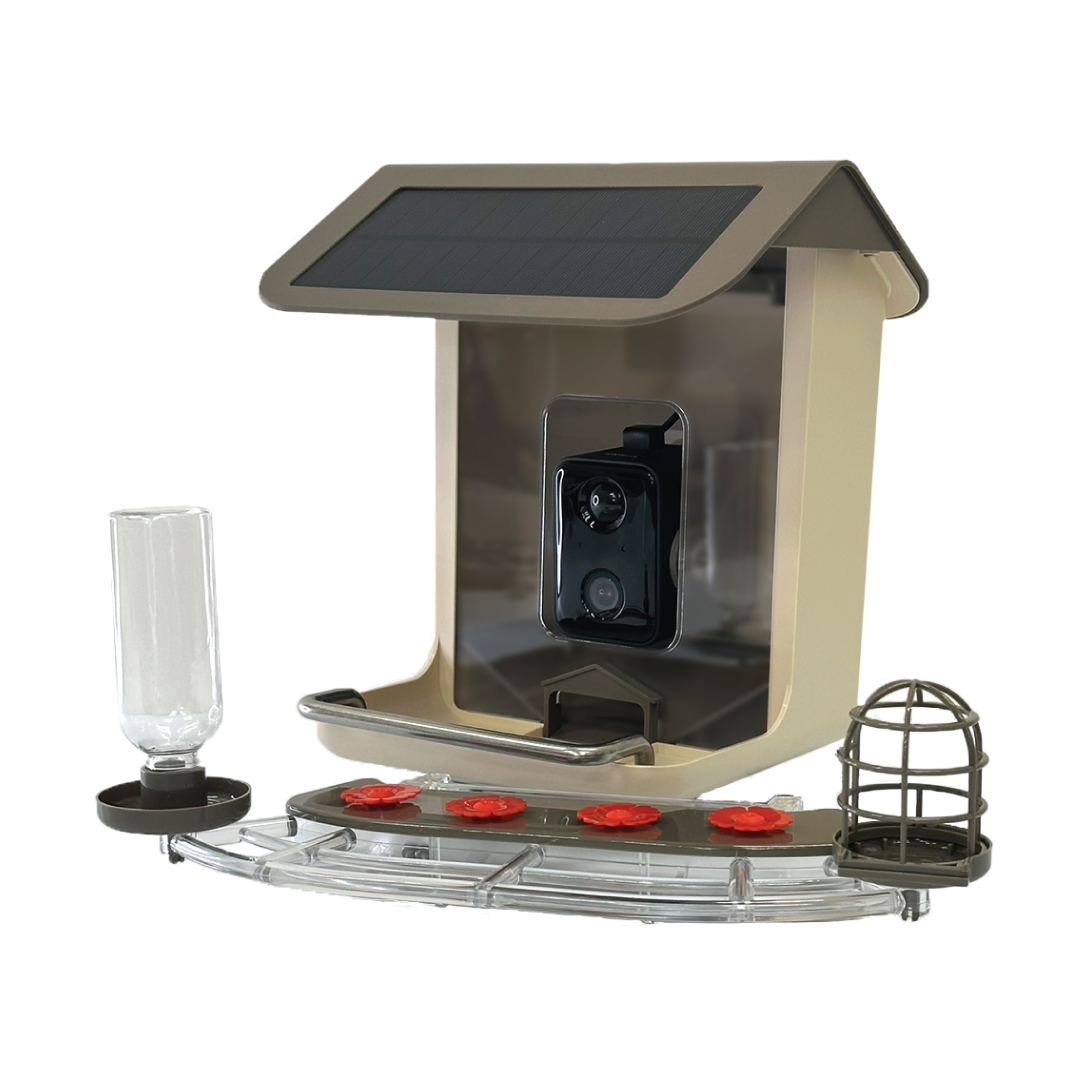

Suet Feeders
- Suet is a high-energy food source for birds, providing essential fats and proteins, especially important during colder months or migration periods.
- Suet feeders attract a wide variety of bird species, including woodpeckers, chickadees, nuthatches, and many others, enhancing the diversity of birds in your yard.
- Suet is excellent for year-round option for feeding birds, even in inclement weather.
- Suet cakes are easy to store and handle, requiring minimal effort to refill feeders compared to loose seed or nectar.
- Suet cakes are less messy compared to loose birdseed, reducing the risk of attracting rodents and other pests to your yard.
- Suet feeders can attract birds that may not visit traditional seed feeders, providing year-round entertainment and enjoyment for birdwatchers.
- By providing a reliable food source, suet feeders can contribute to the conservation of local bird populations, especially in urban or suburban areas where natural food sources may be limited.
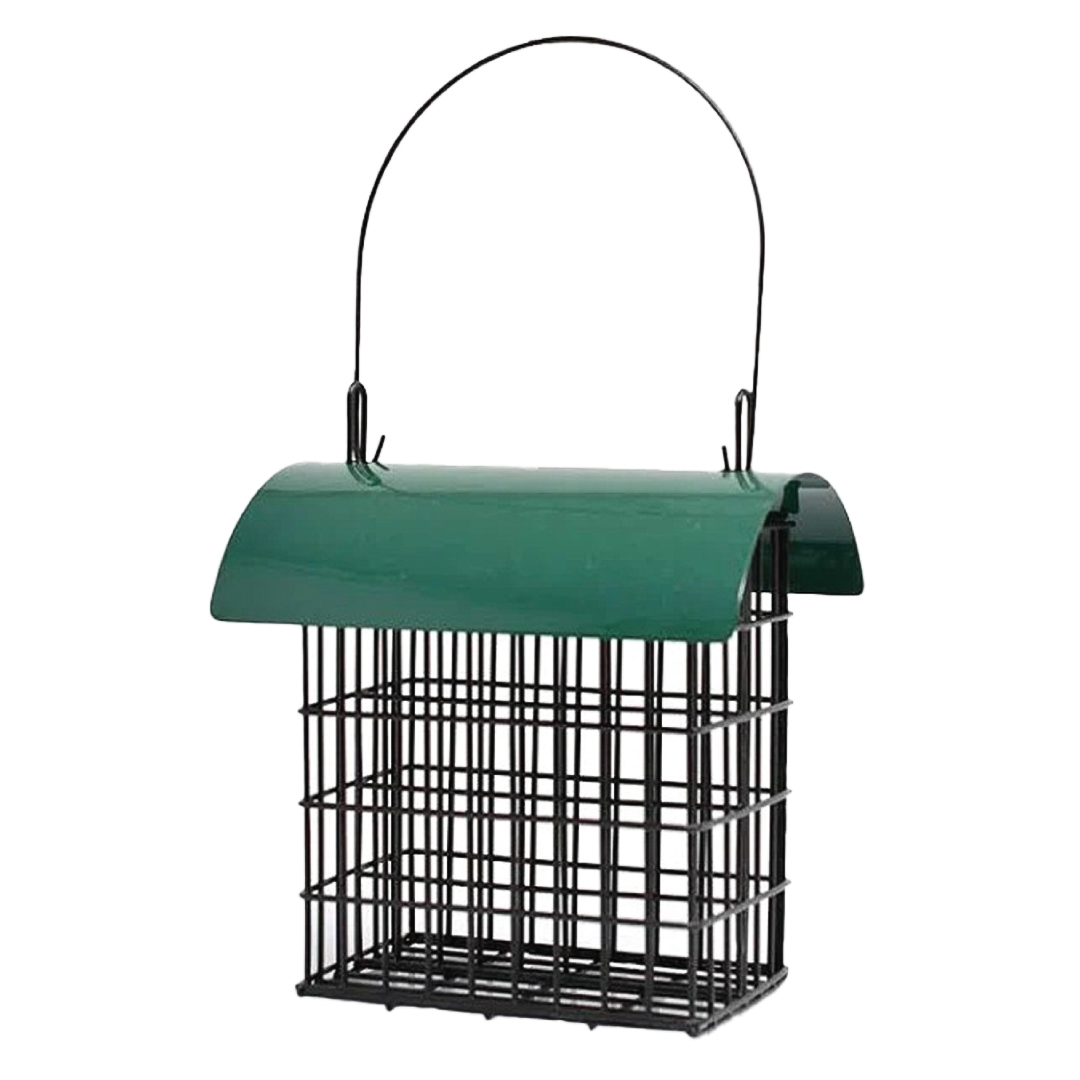

Hummingbird & Oriole Feeders
- Hummingbird & Oriole feeders are specifically designed to attract fascinating birds, providing them with a readily available source of nectar & jellies.
- Having a hummingbird feeder allows you to observe these tiny birds up close, offering unique insights into their behavior, colors, and feeding habits.
- Hummingbird & Oriole feeders can enhance the ambiance of your garden or outdoor space, bringing vibrant colors and lively activity to the area.
- Hummingbirds play a crucial role in pollinating flowers as they feed on nectar, providing them a reliable food source will assist with attracting these birds to your space.
- Hummingbird feeders are relatively low maintenance, requiring only periodic cleaning & refilling with fresh nectar to keep them operational.
- Feeding hummingbirds & orioles can be a great educational opportunity for children and adults alike, offering insights into the fascinating world of these small but mighty birds.
- Watching hummingbirds darting around the feeder can be a relaxing and stress-reducing activity, providing a peaceful break from the hustle and bustle of daily life.
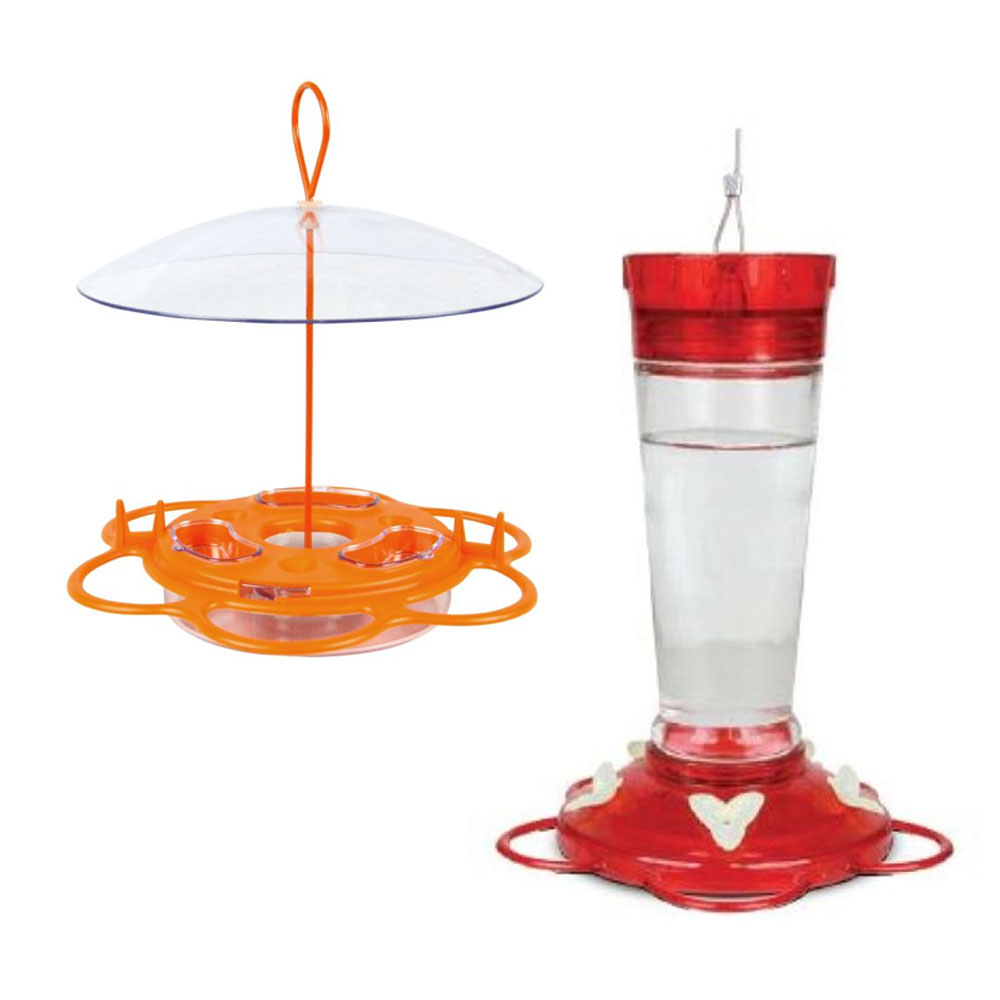

Thistle Feeders
- Thistle bird feeders are specifically designed to attract finches, such as goldfinches, house finches, and pine siskins, adding color and activity to your backyard.
- Thistle seeds are rich in oils and proteins, providing essential nutrients for finches and other small birds, helping them maintain their energy levels, especially during breeding and migration seasons.
- Thistle feeders provide a reliable food source for birds throughout the year, ensuring that they have access to nutrition even during colder months when natural food sources may be scarce.
- Thistle seeds are small and lightweight, making them easy to handle and refill in feeders without creating a mess.
- Thistle feeders are typically designed with small feeding ports or mesh to accommodate finches while deterring larger birds and squirrels, helping to preserve seed for the intended avian visitors.
- By providing a consistent food source for finches, thistle feeders contribute to the conservation of these bird species, especially in areas where natural habitats are diminishing.
- Thistle feeders can be placed in various locations, including hanging from trees, hooks, or specialized poles, offering flexibility in placement and ensuring accessibility for both birds and birdwatchers.
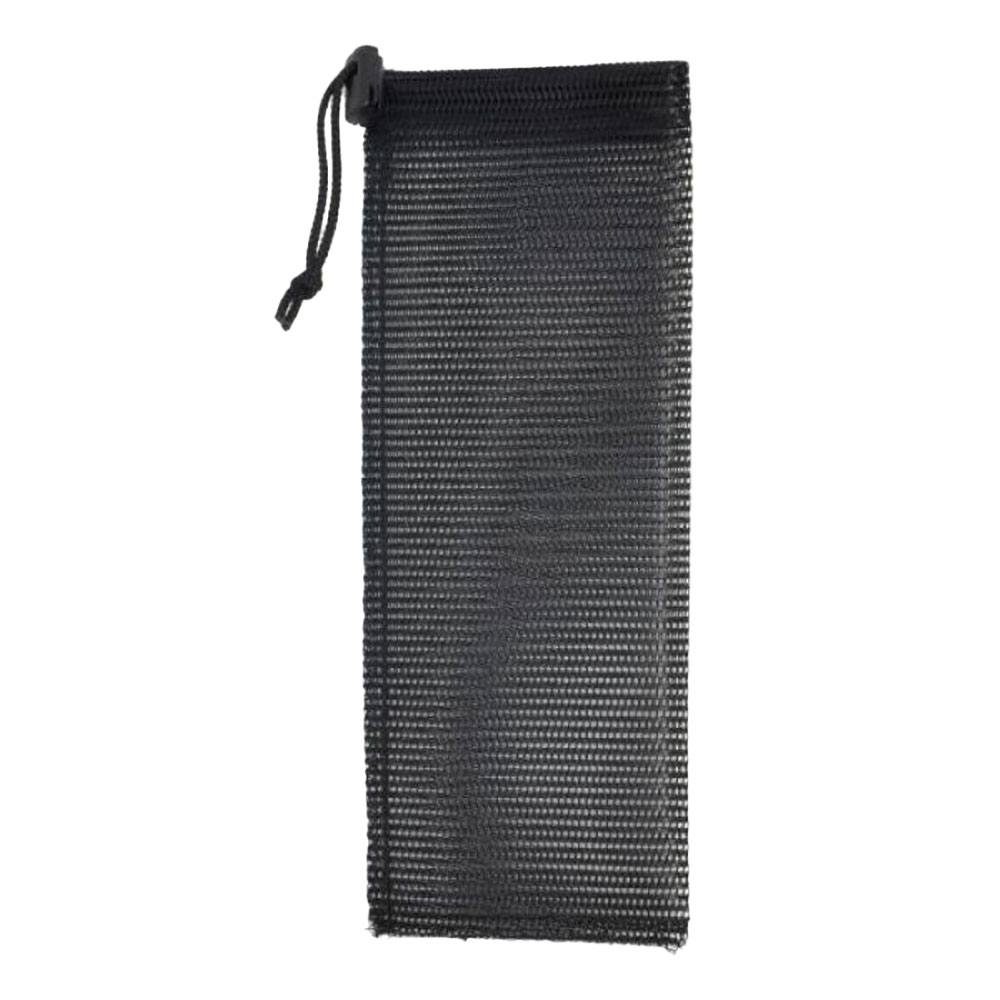

The experts at Gertens are always available to answer your questions!

